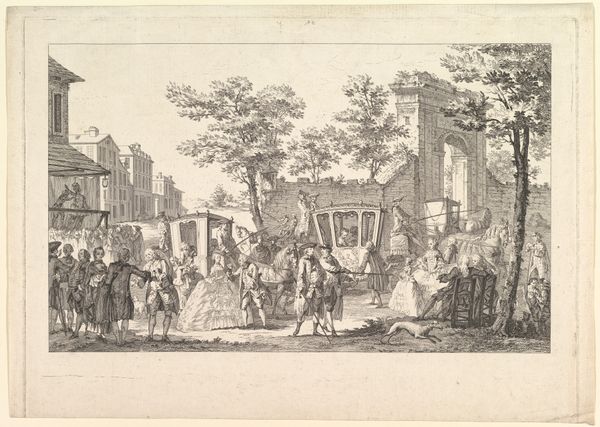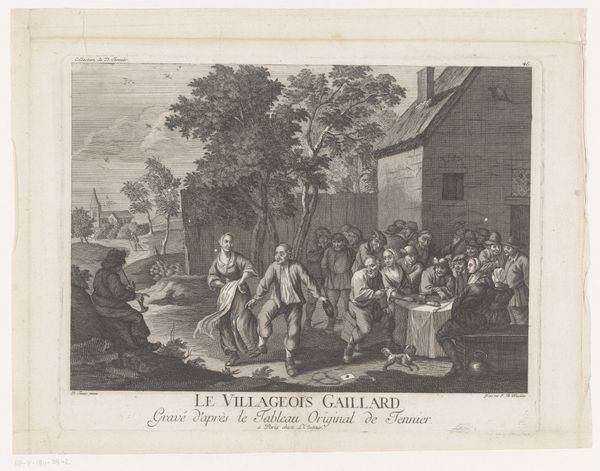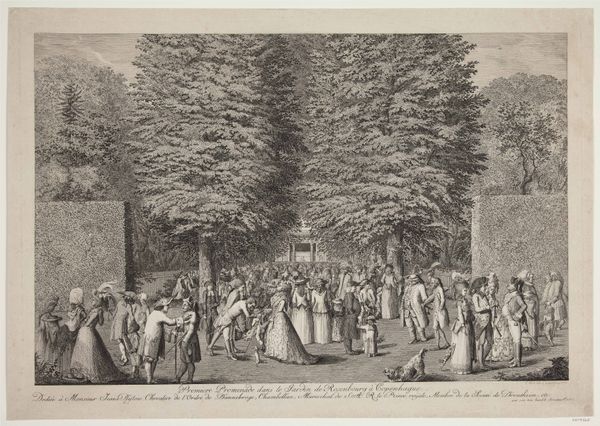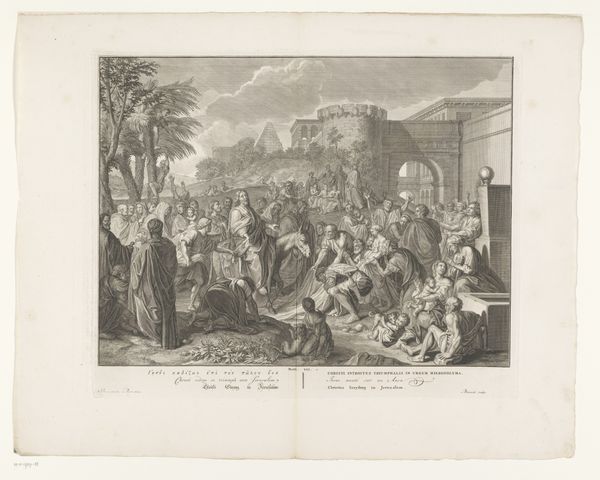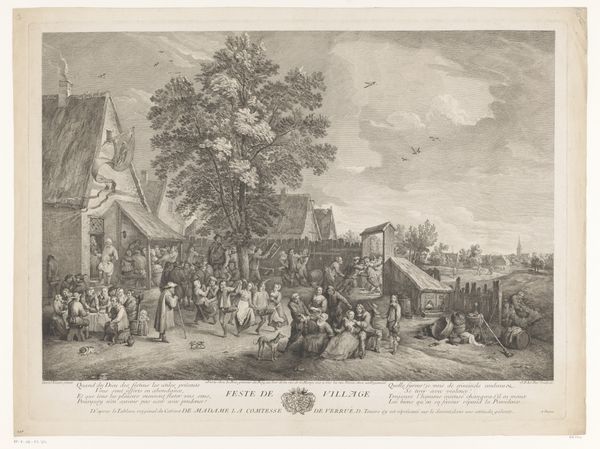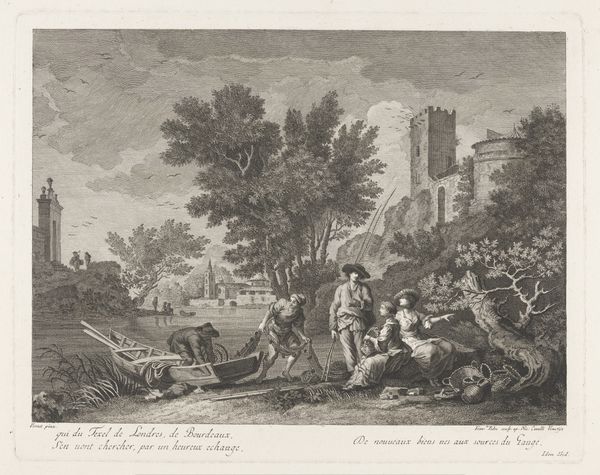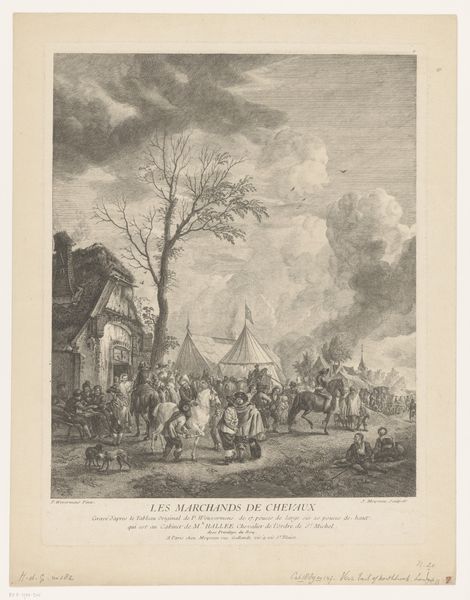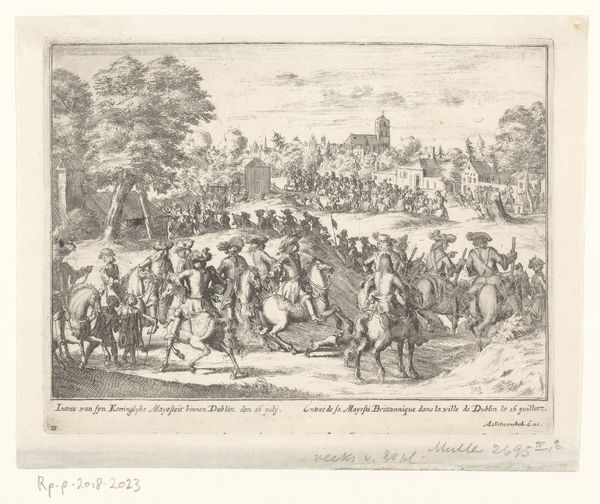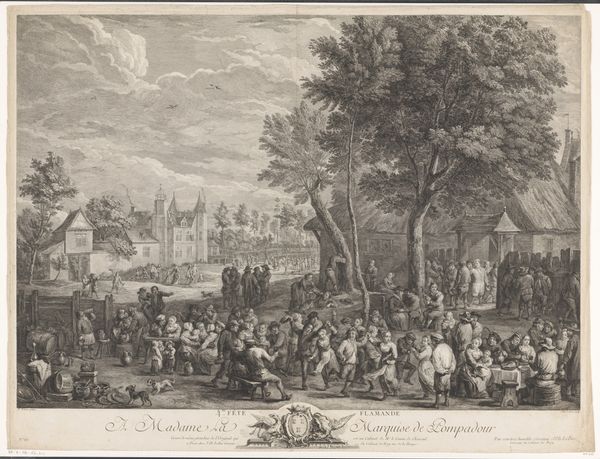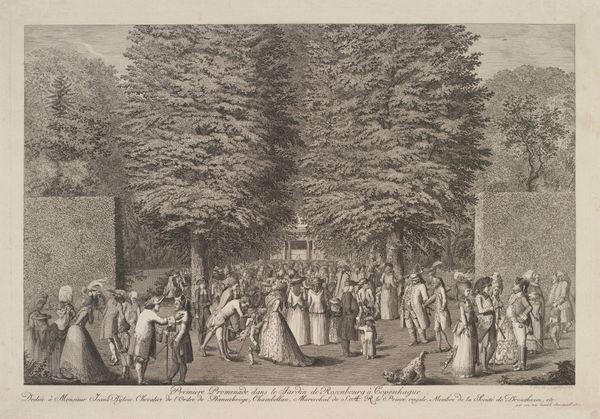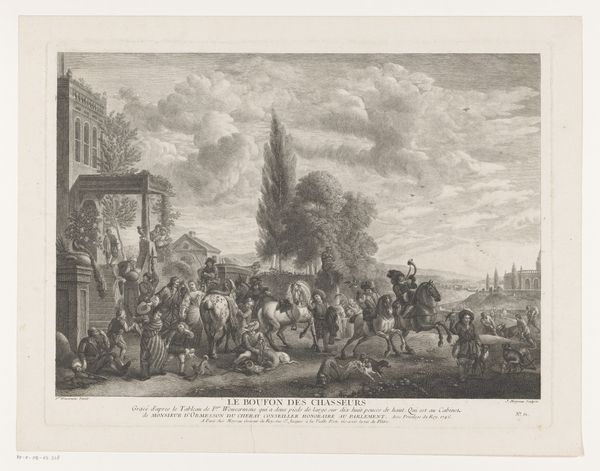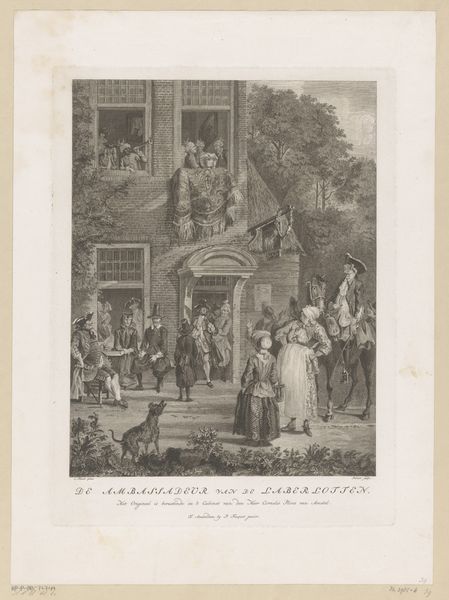
engraving
#
landscape
#
cityscape
#
genre-painting
#
engraving
#
rococo
Dimensions: height 288 mm, width 385 mm
Copyright: Rijks Museum: Open Domain
Editor: Here we have Pierre François Courtois' engraving, "Fashion and Elegance: Strolling Parisians", created sometime between 1746 and 1755. It strikes me as a snapshot of high society. What can you tell me about this depiction? Curator: It’s fascinating to see the Rococo era reflected here, a style that prioritized elaborate ornamentation and the aristocracy's leisurely lifestyle. Engravings like these were not merely decorative. How do you think it acted as a mirror reflecting—but also shaping—the social norms and power structures of the time? Editor: That's a really interesting point! I hadn’t considered the power aspect so directly, more just thought of it as a representation. The careful rendering of fashion, like the extravagant dresses, certainly signals a certain class. Curator: Exactly! Consider how the architecture – the ruined arch in the background and manicured park – sets a stage for these displays of wealth and status. These elements can serve as powerful signifiers of dominance and cultural capital. It's more than a record; it's an active participant in defining societal values. Editor: So, beyond documenting fashion, the engraving might reinforce existing social hierarchies? By glorifying the aristocratic lifestyle, could it have contributed to the disparities of the time? Curator: Precisely. Think about who this image was intended for. It was circulated among the elite. Therefore, it reinforced *their* values *to* them and perhaps provided a sense of superiority and a model to emulate for those aspiring to that lifestyle. Editor: It's a powerful message embedded in a seemingly innocent scene! It highlights the responsibility that comes with representing any era through art. Curator: Agreed. This image is a reminder that even depictions of elegance and leisure can carry profound social and political implications, shaping our understanding of the past.
Comments
rijksmuseum about 2 years ago
⋮
During the early 18th century small series of costume plates reported on the fashion of the day. Women wore the loose-fitting robe volante, also called a ‘sack-backed gown’ in English, over which women sometimes added a short, hooded cloak known as a bagnolette. Men dressed in long coats over a waistcoat and knee-breeches. Pig-tail wigs were adorned with large bows, and tricorne hats were tucked under the arm rather than worn on the head. The two large prints from around 1760 show Parisians out for a stroll. Curiously, the women wear wide paniers (hoop skirts) for their promenade on the ramparts. In the caption underneath, they are condemned as silly slaves of fashion who blindly follow the dictates of the latest trends.
Join the conversation
Join millions of artists and users on Artera today and experience the ultimate creative platform.
